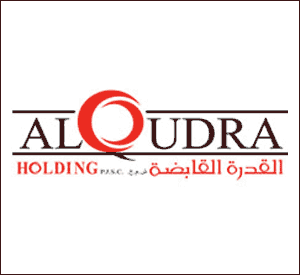Bahrain: Bahrain Geography Profile 2012
2012/02/21
Bahrain Geography Profile 2012
 Bahrain, officially, Kingdom of Bahrain, a small island nation of southwestern Asia. It is situated in the Persian Gulf about midway between Saudi Arabia and Qatar. The country consists of a main island, called Bahrain, and a number of smaller ones, including Muharraq, Sitrah, and the Hawar Islands. Muharraq, Sitrah, and the country of Saudi Arabia are linked by causeway to Bahrain. The entire country has an area of only 257 square miles (665 km 2).
Bahrain, officially, Kingdom of Bahrain, a small island nation of southwestern Asia. It is situated in the Persian Gulf about midway between Saudi Arabia and Qatar. The country consists of a main island, called Bahrain, and a number of smaller ones, including Muharraq, Sitrah, and the Hawar Islands. Muharraq, Sitrah, and the country of Saudi Arabia are linked by causeway to Bahrain. The entire country has an area of only 257 square miles (665 km 2).
Much of the island of Bahrain is low and flat, but toward the interior the land rises gradually to about 400 feet (122 m) above sea level. Rainfall averages less than 5 inches (127 mm) annually; high temperatures and high humidity prevail most of the year.
Manama is the capital and largest city of Bahrain. Arabic is the language used by most Bahrainis. English, Farsi ans Urdu are also spoken. Most of the people are Arabs and followers of the Islamic faith. Bahrain's literacy rate is about 90%. Schooling is free for all children.
Climate
Bahrain has an arid to extremely arid environment. It is characterized by high temperatures, erratic and often scanty rainfall, high evapotranspiration rates (with peaks of over 10 mm/day in July) and high humidity levels due to the surrounding Arabian Gulf waters. Temperature averages vary from 17°C in winter (December-March) to 35°C in summer (June-September). The rainfall season extends from November to April, with an annual average of 70.6 mm, sufficient only to support the most drought resistant desert vegetation. The mean annual relative humidity is over 67%.
Western Africa, bordering the North Atlantic Ocean, between Guinea-Bissau and Mauritania
14 00 N, 14 00 W
Africa
slightly smaller than South Dakota
2,640 km
tropical; hot, humid; rainy season (May to November) has strong southeast winds; dry season (December to April) dominated by hot, dry, harmattan wind
generally low, rolling, plains rising to foothills in southeast
fish, phosphates, iron ore
lowlands seasonally flooded; periodic droughts
wildlife populations threatened by poaching; deforestation; overgrazing; soil erosion; desertification; overfishing
westernmost country on the African continent; The Gambia is almost an enclave within Senegal
- Related Articles
-
Middle East
2011/04/20 Over 350 million people live in the Middle East. The Middle East (see political map), for the purposes of this module, includes the states of
-
- Bahrain News
-
- BAHRAIN: Aluminium Bahrain’s Line 6 Expansion Achieves 25 Percent Completion
- AFGHANISTAN: UNWTO: International tourism – strongest half-year results since 2010
- BAHRAIN: IMF urges Bahrain to implement further fiscal reforms
- BAHRAIN: Bahrain inks deal to develop solar power policies
- BAHRAIN: Bahrain's GFH acquires $1.2bn land bank
- BAHRAIN: Bahrain issues new rules to encourage fintech growth
- Trending Articles
-
- CHINA: The downsides to Singapore’s education system: streaming, stress and suicides
- CHINA: Going green: the changing face of corporate finance
- CHINA: China embraces smart factory technology in manufacturing arms race with Germany, Japan
- WORLD: Five reasons why global stock markets are surging
- PAKISTAN: Nawaz Sharif to become PML-N chief again?
- JAPAN: Carmakers face billions in European CO2 fines from 2021









